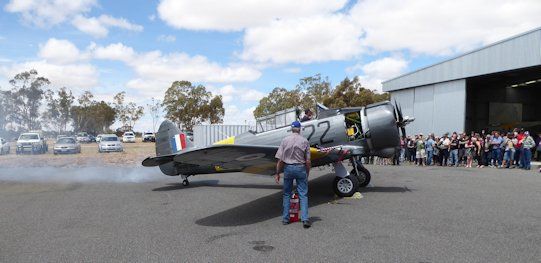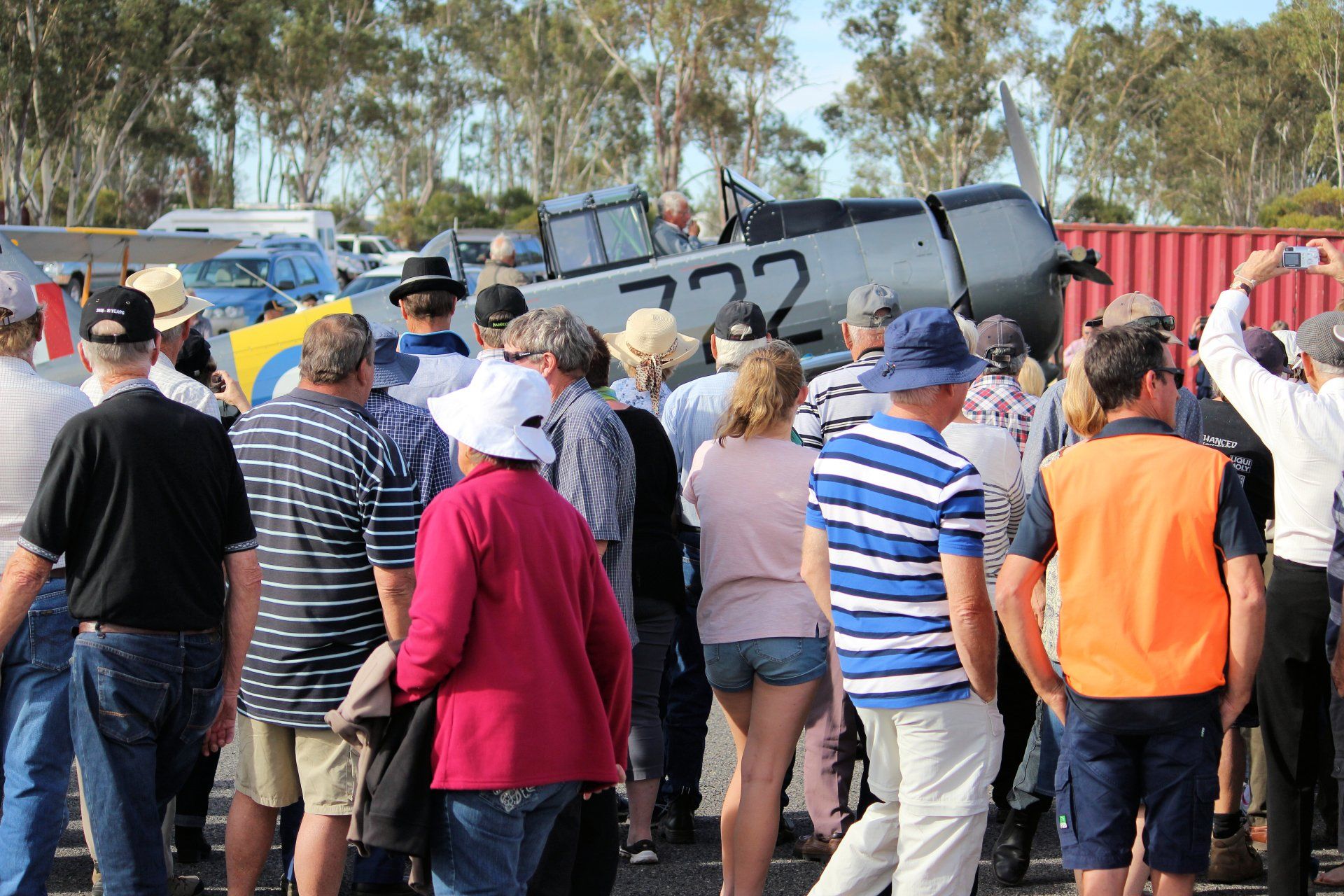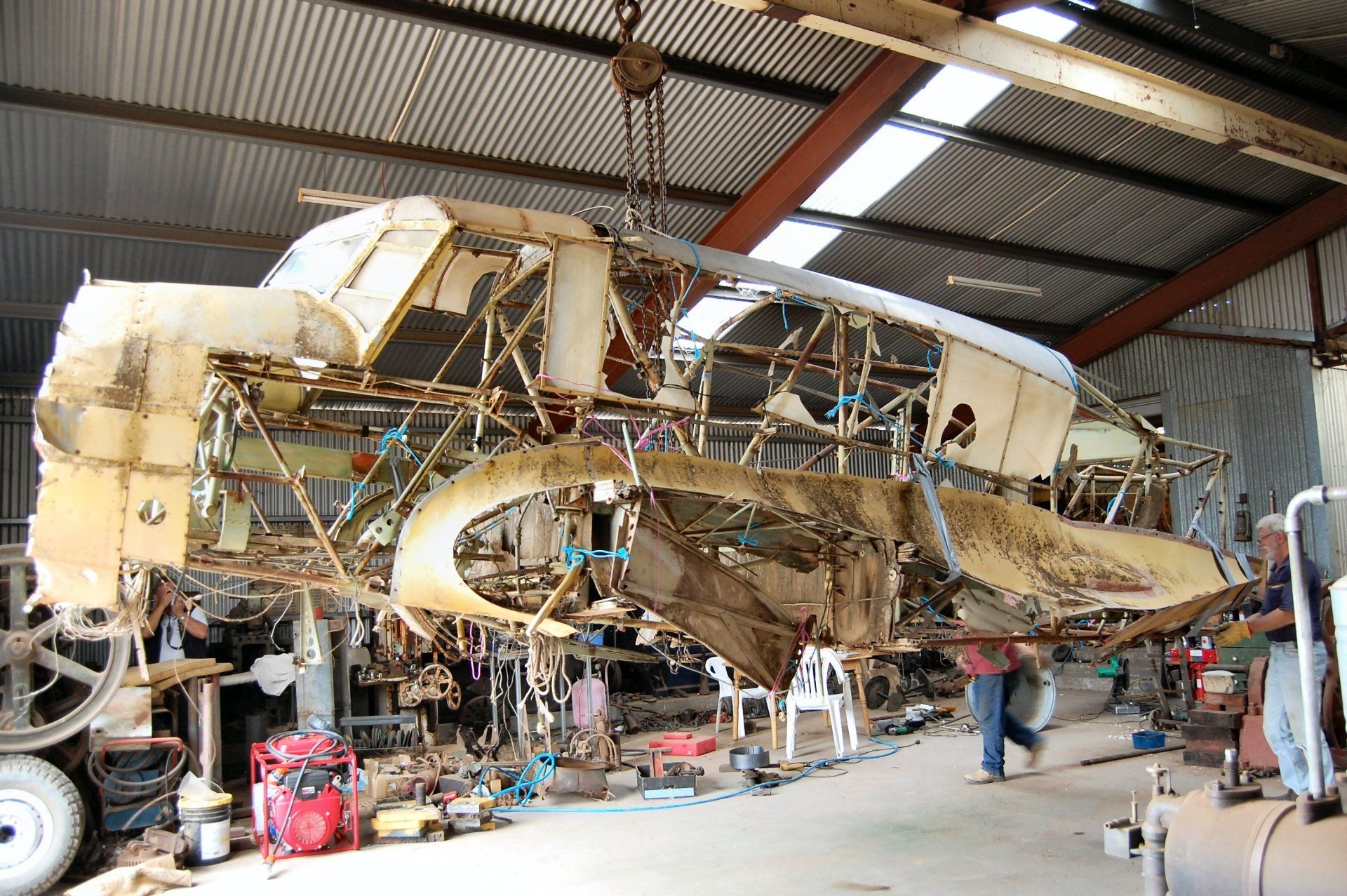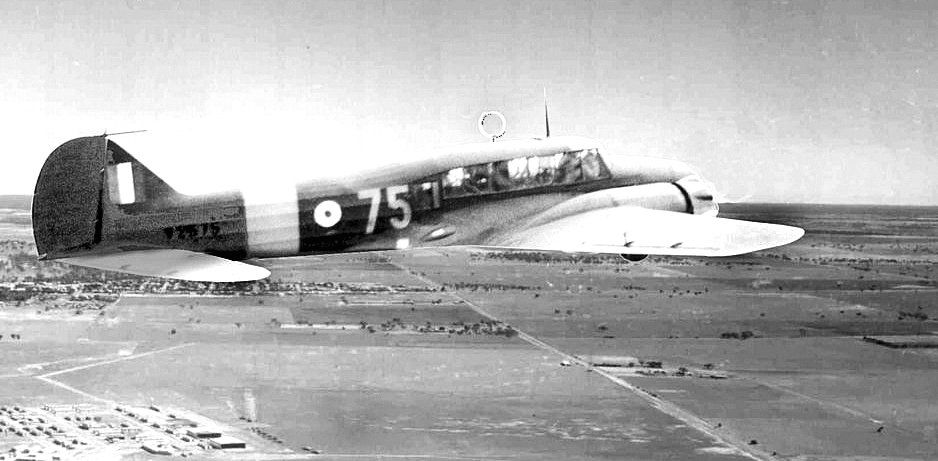NHILL ANSON NEWSLETTER No 28
Issue No. 28. 03-08-2014.
Neptune Bomber makes emergency landing at Nhill.
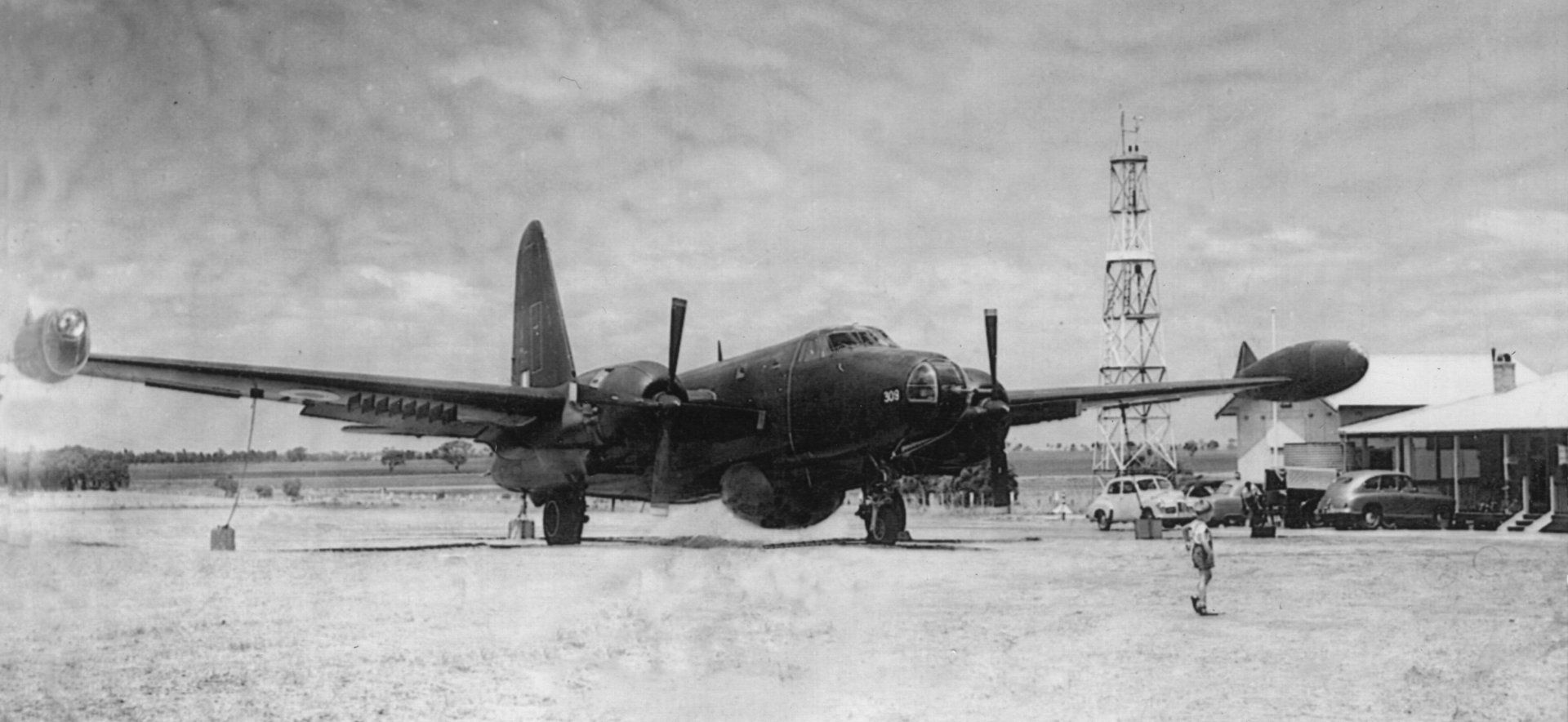
Highlights in this newsletter
Neptune Bomber at Nhill
Moving two Avro Ansons
Neptune Bomber at Nhill
Edited by John Deckert
Several years ago I was shown a framed certificate thanking the Nhill police for assisting in the safe landing of a Neptune Bomber. The briefest details fired my imagination and so I set about trying to find members of the crew. The search was futile until I wrote to the editor of Flightpath asking for assistance. The pleasing response has allowed me to compile the following story.
The framed certificate was given by Ron Letch who also supplied photos and most of the following story. However, some detail has been added from information received from Viv Shearn and some from others interested in commenting on the incident and Neptune aircraft in general.
In mid-December 1953, pilot Flt. Lt. Ron Graham, navigator, Flg. Off. Mike Nestor and F. Sgt. Ron Letch, were flown by civil aircraft to Melbourne to meet with pilot Flt. Lt. Viv Shearn to collect Neptune A89-309 which had been attached to the Aircraft Research & Development Unit, RAAF Laverton to undergo a series of Test Schedules. The aircraft had recently been flown by Viv Shearn, Paul Jessop and crew on 27th November, 1953, covering radar and radio compass trials. When ready to leave for Pearce the aircraft's bomb-bay was loaded with panniers containing heavy equipment, and the fuel tanks were filled for the trip. Being just a few days before Xmas, a number of airmen and airwomen had been booked on board for leave in W.A. Neptune A89-309 left at 7.30 pm, and due to heavy air traffic was diverted to fly a more southerly course over the sea south of Warrnambool. This meant flying over Mount Gambier and then the Bight, not crossing the coast again until somewhere between Eucla and Esperance. While cruising at a height of 6500 feet with the autopilot engaged the skipper moved down the back to put on the coffee percolator for a "cuppa". The Neptune's main spar box, part of the wing structure, goes right through the centre of the fuselage, making it necessary to crawl over it to go fore and aft. Some passengers were resting against it due to lack of space.
Suddenly, loud bangs came from the starboard engine and flames began shooting out in front. The percolator went one way, someone got trampled on and faces went pale. Arms and legs flew in all directions as Ron Graham launched himself over the spar to reach the cockpit. Ron took over from Viv Shearn, feathered the propeller, and shut down the engine. The flames went out. Neptune A89-309 was about 30 miles south of Warrnambool, on a dark night, and maintaining height with difficulty. An emergency was declared and a "mayday" call sent. The navigator, Mike Nestor, calculated that at the present rate of descent it would not be possible to return to Laverton or reach a South Australian airfield. The only airfield within range with radio was Nhill in western Victoria and it might just be possible to make a straight-in approach and landing, but Nhill did not have night-landing facilities or air-traffic control.
The Nhill Aeradio operator came to the rescue advising that Nhill aerodrome had a grassed surface about 3,600 feet long. With just one engine, the Neptune would not be able to use reverse thrust, but would have to rely on brakes alone to bring the 35-ton machine to a halt. The Aeradio operator rang the local police, who rounded up drivers from the local hotels and arranged them on both sides of the field to form a car-headlight flare-path. On approach to Nhill the pilots had enough height to perform a half-circuit to place them in the best direction for landing; with no possible chance of "going around" for a second approach. With landing gear down and maximum flaps they glided over the fence, but the aircraft floated - and floated - and floated again, before a gentle touchdown. The Neptune came to a shuddering halt about ten metres from the fence leaving the brakes glowing red many minutes later. Because it was a grassed surface, no tyres burst, as they had done on hard runways on other occasions under heavy braking.
Months later, when the engine had been dismantled, a huge hole could be seen where the valve-head had punched through a piston. The head of a valve had snapped off, and hot exhaust gases had been forced into the carburetor causing the flames.
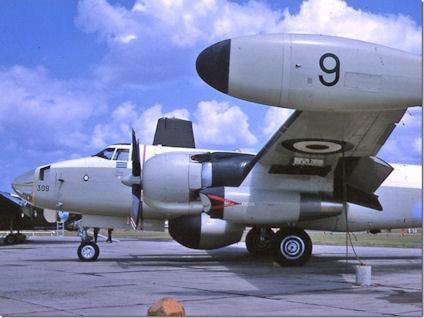
A much later photo of the same aircraft with a new colour scheme and jet engines fitted.
Nhill Aviation Heritage Centre Board Member, Len Creek remembers that a spare engine and ground staff from Pearce were flown in by Dakota. However, when they arrived it was realised that there was no suitable crane in Nhill with which to remove the engine from the Dakota so it continued on to Melbourne and the new engine brought back to Nhill by road. The Neptune was taxied to the hanger and moved in from the southern end. However, because of the tricycle undercarriage the tail was much too high for the building so the doors were closed to just clear the aircraft and the engine was changed under cover. It was only when the Neptune was removed from the building and the engines run up and tested that the second engine was found to be underperforming and the decision made to replace it also. Neptune A89-309 forced landed due to oil pressure loss on 18/12/53 and finally arrived at 11 Sqn RAAF Pearce on 19/01/54.
Alf Tremain, an Ex P2V7 Neptune pilot with No 10 Sqn. RAAF added the following information: Originally numbered A89-694 (Lockheed c/n 426-5110) was received in USA on 06/04/51 and was renumbered A89-309 on arrival at Richmond, NSW, 15/08/51. In 1953 the P2V5 Neptune was powered by two piston engines. However in 1959 all of the squadron’s aircraft were progressively modified with the fitment of an additional two turbojet engines. These jet engines could be started at any time and provided more than sufficient power for an aircraft to maintain height in the event of the failure of one or both of the piston engines. In 1966 I believe the P2V5 Neptunes had been replaced by the P3 Orion. Later models of the P3 are still in service today with No 11 Squadron. Some Neptune aircraft at Richmond still had rocket rails as late as 1960.
Avro Anson Disposal Post WWII
How does a plane with a 20 metre wingspan get moved from an aerodrome to a farm? It seems that
around Nhill quite a number were sold and finished their lives supplying all sorts of bits and pieces for
farmers who found themselves very short of almost everything after the war. NAHC Board member said
that he was offered an Avro Anson in flying condition for £20. (Value of $1300 in 2013 according to the
Reserve Bank calculator). It seems that most of the aircraft around Nhill were found within 20
kilometres and were towed behind a tractor after having their wings removed.
During the NAHC Opening Day in May I was introduced to Rod and Janette Smith from South Australia.
Janette’s father purchased two Avro Ansons at the end of the war and moved them to his farm.
Fortunately, Janette had some very small photos taken at the time and I asked to be allowed to scan
them which happened only recently. I thought the photos and the story behind them was quite unique.
Mr GP Daniell purchased two Avro Ansons numbered W1529 and K8713 from the RAAF Base at Mallala about 50
kilometres north of Adelaide. It is thought that he paid £10 each for them. Mr Daniell arrived at Mallala with a truck
with a semi-trailer with another small trailer coupled behind the semi. It also appears that he had a good axe,
lots of rope and Bob Scott, Janette Smith’s father. Between them they must have also had plenty of energy. The
photos explain how the road train was assembled.
However, it was not only the imaginative loading of both aircraft that I found amazing. It was the 160 kilometres
that was travelled from Mallala to Coobowie near the southern tip of Yorke Peninsula that struck me as being
quite remarkable. Imagine trying to do that today. Police, power and telecom escorts would cost a fortune apart
from the problem getting permission from the highways department.
Thanks Janette for a great story.
For more photos and stories download the PDF

